Tavex uses cookies to ensure website functionality and improve your user experience. Collecting data from cookies helps us provide the best experience for you, keeps your account secure and allows us to personalise advert content. You can find out more in our cookie policy.
Please select what cookies you allow us to use
Cookies are small files of letters and digits downloaded and saved on your computer or another device (for instance, a mobile phone, a tablet) and saved in your browser while you visit a website. They can be used to track the pages you visit on the website, save the information you enter or remember your preferences such as language settings as long as you’re browsing the website.
| Cookie name | Cookie description | Cookie duration |
|---|---|---|
| tavex_cookie_consent | Stores cookie consent options selected | 60 weeks |
| tavex_customer | Tavex customer ID | 30 days |
| wp-wpml_current_language | Stores selected language | 1 day |
| AWSALB | AWS ALB sticky session cookie | 6 days |
| AWSALBCORS | AWS ALB sticky session cookie | 6 days |
| NO_CACHE | Used to disable page caching | 1 day |
| PHPSESSID | Identifier for PHP session | Session |
| latest_news | Helps to keep notifications relevant by storing the latest news shown | 29 days |
| latest_news_flash | Helps to keep notifications relevant by storing the latest news shown | 29 days |
| tavex_recently_viewed_products | List of recently viewed products | 1 day |
| tavex_compare_amount | Number of items in product comparison view | 1 day |
| Cookie name | Cookie description | Cookie duration |
|---|---|---|
| chart-widget-tab-*-*-* | Remembers last chart options (i.e currency, time period, etc) | 29 days |
| archive_layout | Stores selected product layout on category pages | 1 day |
| Cookie name | Cookie description | Cookie duration |
|---|---|---|
| cartstack.com-* | Used for tracking abandoned shopping carts | 1 year |
| _omappvp | Used by OptinMonster for determining new vs. returning visitors. Expires in 11 years | 11 years |
| _omappvs | Used by OptinMonster for determining when a new visitor becomes a returning visitor | Session |
| om* | Used by OptinMonster to track interactions with campaigns | Persistent |
| Cookie name | Cookie description | Cookie duration |
|---|---|---|
| _ga | Used to distinguish users | 2 years |
| _gid | Used to distinguish users | 24 hours |
| _ga_* | Used to persist session state | 2 years |
| _gac_* | Contains campaign related information | 90 days |
| _gat_gtag_* | Used to throttle request rate | 1 minute |
| _fbc | Facebook advertisement cookie | 2 years |
| _fbp | Facebook cookie for distinguishing unique users | 2 years |
Understanding What The Term 'Bullion' Means?

Bullion is a term that you may have heard in the world of finance or precious metals, but what exactly does it mean?
In this article, we’ll dive deep into the meaning of bullion, its various forms, and why it holds significant value in the global economy.
What Is Bullion?
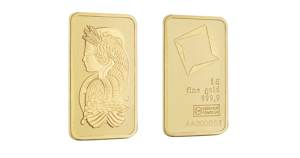
At its core, bullion refers to precious metals in their raw and uncoined form. It can be defined as:
a physical asset that is valued based on its precious metal content and is typically in the form of bars, coins, or ingots
These metals include gold, silver, platinum, and palladium. Bullion is highly sought after for its intrinsic value, which is based on the metal’s purity and weight. Unlike coins or jewellery, bullion is valued solely for the metal it contains, making it a popular choice for investors.
These coins are produced by government mints, such as The Royal Mint or the Royal Canadian Mint, and are typically made from precious metals. They are valued based on their metal content and weight, making them a popular choice for investors. Notable examples include the Canadian Maple Leaf, the South African Krugerrand, and Gold Sovereigns.
The Bullion Market
Role of the Bullion Market
The bullion market, often referred to as the precious metals market, is where the buying and selling of bullion take place. It functions as a global marketplace for investors, offering a wide range of products including gold bars, silver coins, and platinum ingots.
Prices in the bullion market are primarily determined by supply and demand dynamics, as well as factors like economic conditions, geopolitical events, and currency fluctuations. To explore more into this topic look at our guide on how the price of gold is determined.
Different Types of Bullion
In addition to bullion coins, the bullion market encompasses various other forms of precious metal products. These include bullion bars, which are rectangular or square-shaped bars made of pure metal.
Bullion bars are usually produced by private mints and come in various sizes, making them suitable for a range of investment budgets and makes it a key factor in your investment decisions.
Types of Bullion
Gold Bullion
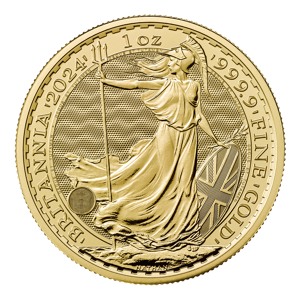
Gold bullion is perhaps the most well-known and widely traded form of bullion. It comes in various shapes and sizes, such as bars, ingots, and coins. The purity of gold bullion is typically measured in troy ounces, with the most common being 99.9% pure gold, known as “24-karat gold.”
When investing in gold bullion make sure to consider the weight and purity of your investment. For example, gold bullion coins comes in a variety of denominations, and other products such as the South African Krugerrand which are 22 karat gold rather than 24 karat.
Silver Bullion
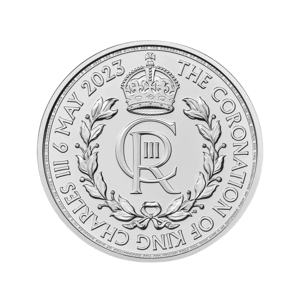
Silver bullion is another popular choice among investors. Like gold, it comes in various forms, including bars, rounds, and silver bullion coins. The purity of silver bullion also varies, with 99.9% pure silver being the most common. Some well-known silver bullion products include the Canadian Silver Maple Leaf, and Austrian Silver Philharmonic.
Platinum and Palladium Bullion
Platinum and palladium bullion may not be as commonly mentioned as gold and silver, but they are valuable nonetheless. Both metals are used in various industrial applications, adding to their investment appeal. Platinum and palladium bullion are typically available in bar or coin form, with varying levels of purity.
Why Invest in Bullion?
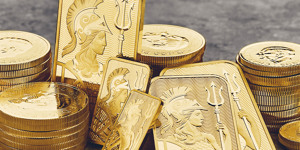
Hedge Against Economic Uncertainty
One of the primary reasons investors turn to bullion is its role as a hedge against economic uncertainty. Precious metals like gold have historically maintained their value during times of financial instability, providing a safe haven for investors looking to protect their wealth.
Portfolio Diversification
Bullion also serves as an effective tool for portfolio diversification
By adding physical assets like gold or silver to their investment portfolios, individuals can reduce their overall risk exposure and potentially enhance long-term returns, making it a cost effective investment.
Tangible Asset
Unlike many financial assets, bullion is a tangible asset that you can physically hold and store. This characteristic appeals to those who prefer to have a physical representation of their wealth. However, please note, it is important to have a secure storage option, for example security vaults, for your physical gold to mitigate risk of theft.
The Value of Bullion

Investment
One of the primary reasons individuals and institutions invest in bullion is its ability to retain value over time. Precious metals like gold and silver have a long history of serving as a hedge against inflation and economic instability. When paper currencies lose value, bullion tends to appreciate, making it a valuable addition to a diversified investment portfolio.
Collection
Collectors are drawn to bullion for its beauty and historical significance. Many mints produce limited-edition bullion coins and bars that feature intricate designs and commemorate important events. Collecting bullion can be a rewarding hobby, blending aesthetics with the potential for long-term value appreciation.
How to Buy Bullion
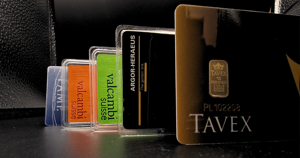
You can buy bullion from reputable bullion dealers, online marketplaces, and even some banks. When buying silver or physical gold bullion, always verify the dealer’s authenticity and the quality of the product. Prices for bullion may fluctuate daily based on market conditions.
At Tavex, we have renowned partnerships with world leading mints and refineries such as The Royal Mint, and Münze Österreich.
Conclusion
Bullion represents precious metals in their purest and uncoined form. Gold, silver, platinum, and palladium bullion are highly regarded for their investment and collectible qualities.
Whether you’re looking to diversify your investment portfolio or admire the craftsmanship of collectible bullion, understanding the meaning and value of bullion is a valuable step in your financial journey.
Remember to do your research, buy from reputable sources, consider which dealer offers the best competitive pricing.




















